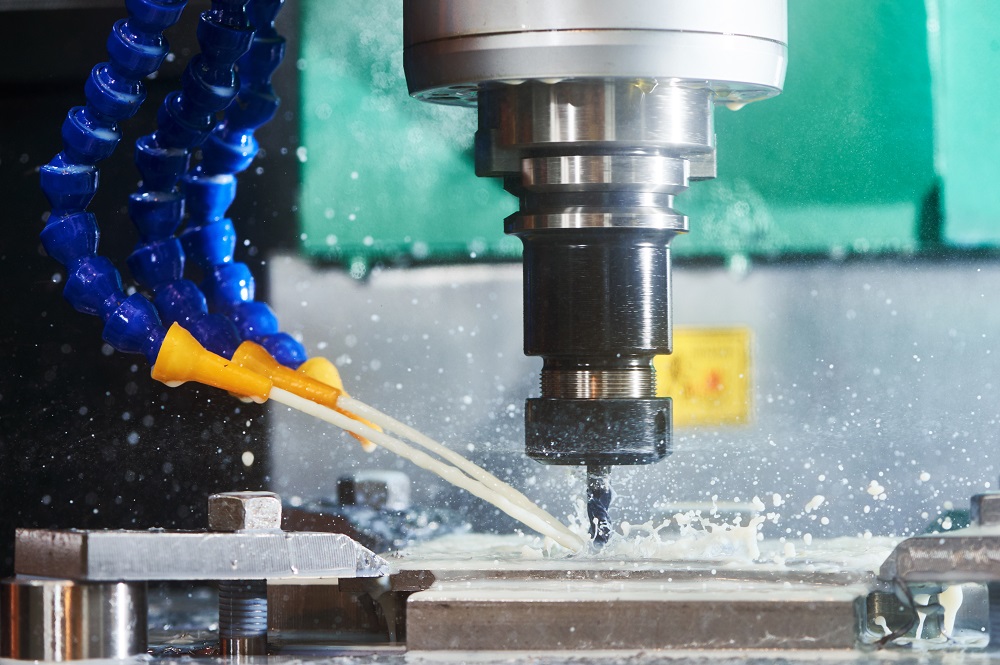
In April, the United Kingdom Lubricants Association Metalworking Fluid Product Stewardship Group and the countrys Health and Safety Executive will launch the Good Practice Guidance for Managing Metalworking Fluids. Aimed at reducing work-related respiratory and skin diseases in those exposed to water-based fluids, the guidance sets out to establish good practices for both supervisors and the operators managing those fluids.
Lube Report spoke to stewardship group chairman Kevin Duncan about the new guidance and contributions the peer-reviewed document can make towards creating a safer working environment. Weve always had the approach within our group to try and update positon papers on specific issues or concerns within the industry. This guide is a way to put it all together in one document.
Established in the late 1990s, the stewardship group was set up to look at different health and safety issues, as well as potential regulatory changes within the sector. Originally it comprised three groups: metalworking fluid users, manufactures and suppliers of ingredients used to make fluids.
Twenty or 30 years ago, the knowledge and understanding of metalworking fluids was relatively underdeveloped from an end user point of view, the people that use metalworking fluids day in and day out, Duncan explained.
You dont actually come into contact with products like hydraulics fluids and gear oils on a regular basis, he continued. Filling or topping up is the most contact you would have. But youre in contact with metalworking fluids on a daily basis, so we thought that needed to be a focus area.
Around 10 years ago, Health and Safety Executive representatives joined the stewardship group, a move Duncan labelled mutually beneficial. They saw the benefit of this as they could get closer to the industry that they were having to regulate, while we were able to have some influence within the HSE to increase education and understanding on how to use metalworking fluids.
The new guide has been several years in the making, building on existing practices and drawing on the insights of manufacturers, engineering companies, HSE experts, workshop managers and health professionals. This was a way of trying to give an overall guidance that wasnt slanted towards a certain problem, Duncan added.
There are guides on the HSE website that are basically your metalworking fluid essentials. The new guidance will come as a progression of that to try and give a more in-depth understanding of what to do with fluids from the initial make of the product right through to disposal, covering the full lifecycle of the fluids and how to work safely with them.
Examples of such documents include the Control of Substances Hazardous to Health Regulations, originally launched in 2002, and the 2014 guide Risk assessment, a brief guide to controlling risks in the workplace.
According to Duncan, a lot of the information contained in this guidance was already in the public domain. Information on skin diseases and respiratory problems that are associated with metalworking fluids are known and understood. Previous publications described good practices for various aspects of fluids, but none has combined everything from purchase to disposal of metalworking fluids into a single document. How to actually use the fluids is the key to this document, the Duncan said of the guidance.
While there wasnt one particular incident that prompted the stewardship group and HSE to produce a guide, there have been publicized issues with metalworking fluids, such as those that came out an investigation into cases of extrinsic allergic alveolitis in employees of engine components manufacturer Powertrain Ltd. Following a two-year study into the exposure to microbial contaminants of metalworking and wash fluids, the HSE found 102 cases of work-related respiratory diseases, both probable and definitive, of occupational asthma and extrinsic allergic alveolitis caused by the use of water-based metalworking fluids and the levels of mist during operations. Powertrain closed its doors in 2005 after filing bankruptcy earlier that year.
The new guidance also came about as a result of a push by the fluid suppliers and the HSE, knowing that changes to legislation have been ongoing for a number of years, with certain chemicals becoming less usable and restrictions becoming tighter. The use of formaldehyde and biocides has become more controlled with the [European Unions Biocidal Products Directive], Duncan said.
There is more and more investigation on differed molecules as theyre being registered through to 2018. This guidance gives advice, a better understanding and provides a greater depth of knowledge. When someone buys metalworking fluids and they see there is a restricted chemical included in the material safety data sheets, they dont have to panic because they have the understanding of the full formulation and how to use it. They know what the restrictions are and what they should be doing to try and minimize health issues associated with these fluids.
According to Duncan, this work was part of an effort to demystify the information that is added to [material safety data sheets], to demystify fluids and to facilitate a greater understanding about them. The more understanding and education people have on the risks, the more likely they are going to use metalworking fluids in a safe way. And therefore the long term [benefits] are going to be there.
The new guidance does not carry the force of law or even policy recommendations. That said, Duncan nonetheless hopes end users take it seriously and that they use their fluids in appropriate ways. This means viewing fluids as a major part of their processes.
Historically, the thought has always been, Oh, it is just a coolant, it is not as important as the engineering part of our manufacturing. The coolant in fact is an integral part of their processes, and if used and monitored correctly can actually improve the process, reduce downtime and lead to a safer working environment for the operators. So there are a multitude of different areas where this guide can improve their processes, creating a better working environment overall, Duncan underlined.
Photo: kadmy/iStock
